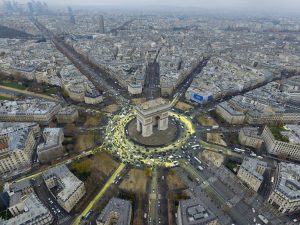In the US there are more than 4000 roundabouts, and Carmel City has been crowned as the ‘roundabout capital of the US’, as it has 100 roundabouts. Aside from being known for its roundabouts, Carmel was voted as the best place to live in America in 2010. Alaska, on the other hand, may not feature among the top five cities with the highest number but it can boast of having 40 roundabouts.
Not All Roundabouts are Perfectly Circular
If you are like me and many other people, I am sure that when the words roundabout are spoken, one shape comes to mind; a circle. Surprise! Not all roundabouts have a perfect circular shape. Some of them are peanut-, teardrop- and even dog bone-shaped. They also vary in their sizes with some being mini, small and large complex multi-lane roundabouts. Roundabouts vary in the lanes they have; some have three, whereas others have up to six.
Roundabouts Help Save the Planet
It seems like every industry is striving to adopt an eco-friendly alternative, and the transport sector has not been left behind. Studies have shown that modern roundabouts can reduce not only traffic but also reduce vehicle emissions (such as carbon monoxide) by as much as 30%, as well as fuel consumption because they reduce vehicle idle time at intersections. This has the compound effect of leaving a smaller carbon footprint in our cities.
Roundabouts Need Less Space and Do Not Need Electricity
You know the chaos which happens around signal intersections when the lights go out. However, if the lights go out when you are on a roundabout, you can still keep driving. Although a roundabout may take up some space on the actual intersection, it takes up less space on the adjacent streets approaching the roundabout. Roundabouts also require fewer lanes approaching the intersection, since they can accommodate a higher traffic volume.
